
Categories:
When it comes to optimizing your AR10 for long-range shooting, one of the often overlooked but crucial components is the magazine. The magazine plays a pivotal role in ensuring reliable feeding and optimal performance, especially when precision is paramount. Understanding the various options available can make a significant difference in your shooting experience and outcomes. AR10 magazines differ from their AR15 counterparts primarily due to their size and capacity, designed to accommodate larger calibers such as the .308 Winchester or 6.5 Creedmoor.
These larger calibers are favored for long-range shooting due to their superior ballistic coefficients and energy retention over extended distances. In selecting a magazine for long-range applications, several factors come into play. Material construction is vital; magazines crafted from high-grade steel or advanced polymers offer durability and resilience under strenuous conditions. The choice between metal and polymer often boils down to personal preference, with metal offering robustness while polymer provides lighter weight without compromising on strength.
Capacity is another critical consideration. While standard capacities range from 10 to 25 rounds, choosing the right capacity depends on your specific needs—whether you require fewer rounds for benchrest shooting or higher capacity for tactical scenarios where follow-up shots may be necessary. Additionally, feed reliability cannot be overstated. A high-quality magazine should ensure consistent feeding without jams or misfeeds, which can drastically affect accuracy during critical moments.
Brands like Magpul, Lancer Systems, and ASC have earned reputations for producing dependable magazines that cater specifically to the needs of long-range shooters. Lastly, consider any additional features such as anti-tilt followers and reinforced feed lips that contribute further to reliability and performance consistency.
When it comes to selecting AR10 magazines for long-range shooting, understanding the material and construction is crucial to ensure reliability, durability, and performance. The materials used in magazine manufacturing significantly influence their weight, strength, and corrosion resistance. One of the most common materials employed in AR10 magazines is aluminum. Aluminum magazines are favored for their lightweight nature and inherent resistance to corrosion.
These magazines often feature anodized coatings that further enhance their durability by providing a hard surface that resists wear and tear. However, despite these advantages, aluminum can be prone to denting under heavy impact which may affect feeding reliability over time. Steel is another prevalent material choice for AR10 magazines. Steel magazines are renowned for their robustness and longevity. They can withstand substantial abuse without deforming or compromising functionality.
Their downside lies in their weight; steel magazines are heavier than those made from aluminum or polymer which could be a consideration when carrying multiple mags over long distances during field operations. Polymer has become an increasingly popular material for AR10 magazine construction due to advancements in polymer technology. Modern polymers offer an excellent balance between weight savings and structural integrity.
These magazines often incorporate features like anti-tilt followers and reinforced feed lips to ensure reliable feeding even under harsh conditions. Polymer is also resistant to corrosion and does not suffer from dents like metal counterparts might. The construction of AR10 magazines typically involves precision molding or stamping processes that ensure consistent dimensions critical for reliable function in semi-automatic guns. High-quality springs made from stainless steel or chrome-silicon wire are essential components as well, providing consistent tension necessary for flawless round-feeding cycles.
When selecting AR10 magazines for long-range shooting, capacity is a vital factor that impacts both performance and practicality. While the typical magazine capacity for an AR10 ranges from 5 to 25 rounds, the choice hinges on several nuanced considerations tailored to the demands of precision shooting over extended distances.
Firstly, lower-capacity magazines, such as those holding 5 or 10 rounds, are often favored by long-range shooters due to their compact size and reduced weight. These smaller magazines minimize the profile of the rifle, making it easier to achieve a stable shooting position prone or on a bench rest. Additionally, they contribute less to overall rifle weight, which can be crucial during extended shooting sessions where fatigue becomes a concern.
On the other hand, higher-capacity magazines offer practical benefits in scenarios where multiple follow-up shots are anticipated. In competitive shooting or dynamic long-range scenarios where repositioning is frequent and swift engagement of targets is required, having additional rounds readily available can be advantageous. However, these larger magazines may introduce challenges such as increased weight and bulkiness that could affect maneuverability and balance.
It’s also worth noting that reliability is paramount when considering magazine capacity. A higher-capacity magazine must maintain consistent feeding under recoil without compromising on accuracy—a critical aspect when precision matters most at extended ranges.
Ultimately, the choice of magazine capacity should align with your specific objectives and shooting environment. Whether prioritizing minimalism for ultimate steadiness or opting for higher capacities for tactical flexibility, understanding how each option influences your setup will lead to more informed decisions tailored to your long-range shooting needs.
When selecting AR10 magazines for long-range shooting, one of the critical factors to consider is compatibility with different AR10 models. Unlike the AR15 platform, which tends to have more standardized components, the AR10 can present compatibility challenges due to variations in design and manufacturing standards among different brands.
The two primary patterns of AR10 rifles are based on the original Armalite (AR-10B) design and the DPMS (LR-308) pattern. While these models share many similarities, they also have distinct differences that affect magazine compatibility. For instance, Armalite’s proprietary magazines often feature a unique follower and dimensions that may not fit DPMS-pattern rifles. Conversely, DPMS-pattern magazines are more universally accepted across various manufacturers’ versions of the AR10 platform due to their widespread adoption.
To further complicate matters, certain manufacturers develop their own proprietary modifications to either pattern, leading to additional variances in magazine fitting. Brands like Knights Armament (SR-25) or LMT (MWS) may include specific features or tolerances that necessitate using their branded or specially designated aftermarket magazines for optimal performance.
For shooters focused on long-range precision, ensuring reliable feeding and consistent performance is paramount. Therefore, it becomes essential to verify compatibility before purchase by consulting manufacturer specifications or user reviews specific to your rifle model. Additionally, some aftermarket magazine producers offer detailed fitment guides that can help determine whether a particular magazine will function reliably with your gun.
In summary, understanding the nuances between different AR10 patterns and individual brand specifications is crucial when selecting a magazine for long-range shooting applications. Compatibility checks can save time and resources while ensuring your rifle operates at peak efficiency during critical moments on the range or in competition settings.
When selecting an AR-10 magazine for long-range shooting, reliability and feeding performance are paramount. In the precision shooting community, a malfunctioning magazine can be the difference between hitting a distant target with pinpoint accuracy and experiencing frustrating misfeeds that disrupt your rhythm and concentration.
The construction material of the magazine plays a crucial role in its reliability. High-quality AR-10 magazines are typically made from durable materials such as stainless steel or high-grade polymer. Stainless steel magazines offer robust resistance to deformation and wear, ensuring consistent feeding over time. Polymer magazines, on the other hand, provide lighter weight options while incorporating advanced polymers that resist cracking and warping under extreme conditions.
Another critical factor is the magazine’s internal design. The follower must glide smoothly within the body of the magazine to ensure each round is presented correctly to the chamber. Anti-tilt followers are particularly advantageous as they prevent binding and tilting, which can lead to misfeeds or jams. Additionally, well-designed feed lips maintain their shape under repeated use and stress, guaranteeing reliable round positioning for each shot.
Spring quality also cannot be overlooked; it maintains consistent pressure on rounds as they move up through the magazine. High-tensile springs made from materials like silicon chrome steel offer longevity without losing tension over numerous cycles of loading and unloading.
Moreover, compatibility with various ammunition types is essential for long-range shooters who may switch between different bullet weights or profiles depending on their specific needs. A reliable AR-10 magazine should seamlessly handle these variations without compromising feeding performance.
In conclusion, investing in a high-quality AR-10 magazine designed with robust materials, advanced internal components, and superior engineering ensures that your long-range shooting remains uninterrupted by mechanical failures—allowing you to focus solely on precision marksmanship.
When considering AR10 magazine options for long-range shooting, the weight and balance of the rifle are crucial factors that can significantly affect performance. Long-range shooting demands a high level of precision and consistency, and even slight variations in weight distribution can influence shot accuracy.
Firstly, the weight of the magazine itself can alter the overall heft of your AR10. Heavy magazines may add stability by lowering the center of gravity, which can be beneficial when shooting from a fixed position such as a bench rest or prone. This added stability helps mitigate recoil and allows shooters to maintain their sight picture more consistently between shots.
However, excessive weight might also induce fatigue over prolonged periods, especially if you need to maneuver with your rifle or change positions frequently during a session.
Balance is another critical aspect influenced by magazine choice. Uneven weight distribution can lead to front- or rear-heavy rifles that are harder to control. A well-balanced setup ensures that the rifle feels neutral in hand, allowing for smoother tracking of targets and quicker follow-up shots. For example, using lighter polymer magazines instead of heavier steel ones could shift balance toward a more central point on the rifle, making it easier to handle during both static and dynamic shooting scenarios.
Additionally, consider how magazine capacity affects balance. Higher-capacity magazines tend to be bulkier and may protrude more from the bottom of your rifle. While this might not be an issue on a flat range surface, it could complicate matters in uneven terrain or when using bipods.
Ultimately, achieving optimal weight and balance requires thoughtful consideration of your specific long-range shooting needs and conditions. Testing different magazine options in various scenarios will help identify what works best for maintaining precision without sacrificing comfort or maneuverability.
When engaging in long-range shooting with an AR10, the performance of your rifle is only as reliable as its weakest component, and often, that weak link can be the magazine. Proper maintenance and understanding the durability factors of AR10 magazines are crucial for ensuring consistent performance and longevity. First and foremost, regular cleaning is essential. Residual gunpowder, dirt, and debris can accumulate inside the magazine during extended shooting sessions.
This build-up can hinder the smooth feeding of rounds into the chamber. To clean your AR10 magazine, disassemble it according to the manufacturer’s instructions. Use a soft brush or compressed air to remove debris from inside the body and follower. Wipe down all parts with a clean cloth dampened with a mild solvent designed for guns to ensure there’s no residue left that could affect functionality.
In terms of durability, material choice plays a significant role. Steel magazines are known for their robustness and longevity under rigorous conditions but tend to be heavier than their polymer counterparts. Polymer magazines offer lighter weight and often incorporate advanced materials that resist cracking or warping under extreme temperatures; however, they might not withstand physical impacts as well as steel. Spring integrity is another critical factor in magazine maintenance.
Over time, springs can lose tension due to constant compression cycles or exposure to corrosive elements like moisture or salt. It’s advisable to periodically check spring tension by loading several rounds into your magazine and observing whether they feed properly without any sluggishness. Lastly, inspect feed lips regularly for signs of wear or deformation since these are vital for proper round alignment before chambering.
Any irregularities here can cause misfeeds or double feeds—issues particularly detrimental in long-range precision shooting where reliability is paramount.
When selecting an AR-10 magazine for long-range shooting, the choice of brand and specific model can significantly impact your overall shooting experience and accuracy. High-quality magazines are essential for ensuring reliable feeding, consistent performance, and durability under various conditions. One of the top brands in this realm is Magpul. Known for their durable polymer construction and advanced design features, Magpul’s PMAG 20 LR/SR Gen M3 is a popular choice among long-range shooters.
These magazines are designed to be lightweight yet robust, offering a blend of high-capacity options with exceptional reliability. The anti-tilt follower and aggressive texturing ensure smooth operation and positive handling even in adverse conditions. Lancer Systems also stands out with its L7 Advanced Warfighter Magazine (AWM). Combining steel feed lips with a polymer body, Lancer’s design offers a unique balance of strength and weight reduction.
This hybrid construction helps maintain the integrity of the feed lips over extended use while keeping the magazine lightweight enough for tactical applications. Another noteworthy brand is Hexmag by SENTRY Tactical. Known for their innovative hexagonal pattern that provides superior grip, Hexmag’s SR-25/AR-10 magazines incorporate their signature HEXTURE™ design along with a high-strength polymer build. These features make them an excellent choice for shooters who demand both performance and ergonomics.
Lastly, ASC (Ammunition Storage Components) offers stainless steel AR-10 magazines that are prized for their ruggedness and precise engineering. Their corrosion-resistant finish ensures longevity even in harsh environments, making them ideal for shooters who prioritize durability alongside functionality.
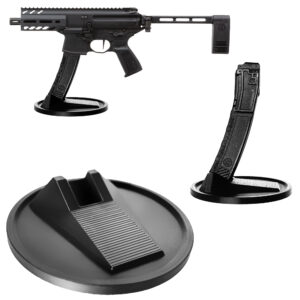
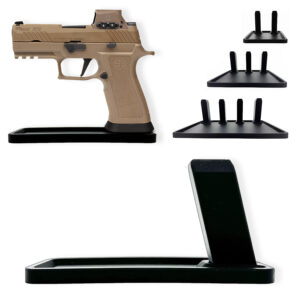
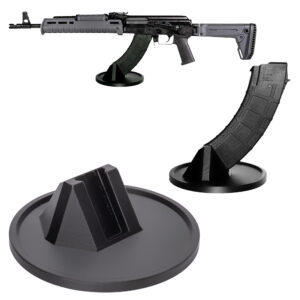


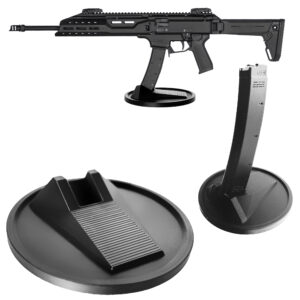
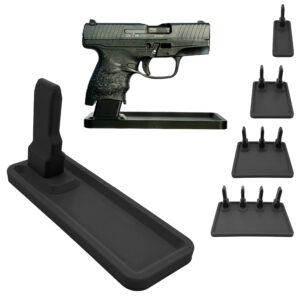

Colt
Colt M4 Carbine
Colt LE6920
Colt AR-15 A4
Daniel Defense
DDM4 V7
DDM4 V9
DDM4 V11
DDM4 ISR (Integrally Suppressed Rifle)
Smith & Wesson (S&W)
M&P15 Sport II
M&P15 Tactical
M&P15T
Bravo Company Manufacturing (BCM)
BCM Recce-16
BCM Recce-14
BCM MCMR Series
Aero Precision
M4E1 Series
AC-15
AR15 Pistol (Various Configurations)
Ruger
Ruger AR-556
Ruger SR-556
Ruger AR-556 MPR (Multi-Purpose Rifle)
Springfield Armory
Saint Victor
Saint Edge
Saint AR-15
PSA (Palmetto State Armory)
PSA PA-15
PSA AR-V
PSA Jakl (AR Pistol)
FN America
FN 15 Tactical Carbine
FN 15 Patrol
FN 15 DMR
Wilson Combat
Recon Tactical
Super Sniper
Protector Carbine
SIG Sauer
SIG M400 Tread
SIG M400 Elite
SIG M400 SDI
LWRC International
IC DI (Direct Impingement)
IC SPR
IC A5
Bushmaster Guns
XM-15 QRC
Bushmaster MOE
XM-15 Patrolman
Rock River Arms
LAR-15 Entry Tactical
LAR-15 Predator
LAR-15 Elite Comp
Stag Arms
Stag 15 Tactical
Stag 15L (Left-Handed Models)
Stag 15 Valkyrie
Noveske Rifleworks
Noveske Gen 4 N4
Noveske Space Invader (AR Pistol)
Noveske Recon
Anderson Manufacturing
AM-15 Optic Ready
AM-15 M4 Carbine
AM-15 Precision Rifle
Adams Arms
AA-15 Piston Rifle
P2 AARS (Adams Arms Rifle Series)
Black Rain Ordnance
SPEC15 Series
BRO Predator
Fallout 15
Diamondback Guns
DB15 Series
DB15CCMLB
DB15EB
Del-Ton Inc.
DTI-15
Del-Ton Echo 316H
Sierra 316M
Windham Weaponry
Windham SRC
Windham VEX-SS
Windham RMCS-4 (Caliber Conversion System)
Christensen Arms
CA-15 G2
CA-15 Recon
CA-15 Titanium Edition
Patriot Ordnance Factory (POF-USA)
Renegade Plus
P415 Edge
Revolution DI
LaRue Tactical
PredatAR
OBR (Optimized Battle Rifle)
LaRue Stealth 2.0
Battle Arms Development
Workhorse Patrol Carbine
BAD556-LW (Lightweight)
Authority Elite Rifle
Faxon Guns
Ascent AR-15
FX-19 (AR Pistol)
Streamline Ultralight Series
KE Arms
KE-15 SLT (Super Lightweight Tactical)
KE-15 Scout Carbine
Primary Weapons Systems (PWS)
MK1 MOD 2-M
MK116 PRO
MK107 (Piston AR Pistol)
ZEV Technologies
ZEV Core Elite Rifle
ZEV AR15 Billet Rifles
Franklin Armory
BFSIII AR-C1
Militia Model
F17-L (Chambered in .17 WSM)
Seekins Precision
SP15 DMR
NX15 Skeletonized Rifle
Havak Bravo
Aero Precision (Additional Models)
EPC-9 (Pistol Caliber ARs)
VG6 AR Rifles
Barrett Guns
REC7 DI
REC7 Gen II
CMMG
MK4 RCE
Resolute 300
Banshee (AR Pistol)
DPMS Panther Arms
Panther Oracle
Panther LR-308
H&K (Heckler & Koch)
HK MR556A1
HK416 (Military Variant)
Rock Island Armory (Armscor)
VR-80 Tactical AR (Shotgun AR Platform)
Troy Industries
Troy SPC-A3
Troy PAR (Pump Action AR)
Wilson Tactical
Tactical Recon AR
Protector Series
F1 Guns
FDR-15 Skeletonized Rifle
BDRx-15 Series
Juggernaut Tactical
JT-15
JT-10 Precision Rifle
AeroSurplus
Surplus AR-15 Rifles (Budget Models)
Thunder Tactical
AR-15 Basic Carbine
Tactical Builder Sets
Radical Guns
RF-15
Forged AR-Series
Dark Storm Industries
DS-15 Featureless Rifles
DS-10 Typhoon
DRD Tactical
Paratus
Aptus AR Rifles
Bear Creek Arsenal
BCA-15
AR Complete Upper Builds
Aero Survival Rifles (ASI)
ASR Tactical Series
Tactical Edge
WARFIGHTER Series
AR-15 Lightweight Rifles
Lone Star Armory
TX15 DMR
TX15 Carbine
HERA Arms
HERA H7
HERA AR-15 Lower Builds
IWI (Israeli Weapon Industries)
Zion-15
DRD Tactical
Tactical Modular Rifles
Quick-Takedown Rifles
V Seven Weapons
1776 Rifle
Hyperlite Rifle
Core Rifle Systems
Core15 Tac III
Core15 Patrol Rifle
Armalite (Original AR-15 Creator)
M15 Tactical
M15 A4 Carbine
DEF15 (Defensive Sporting Rifle Series)
PSA (Palmetto State Armory Additional Models)
PSAK-47 Hybrid (AR-AK Style Hybrid)
PSA Dagger (Pistol Caliber Configurations)
Odin Works
OTR-15
Odin Recon Rifle
Maxim Defense
MDX-508 PDX (Compact AR Pistol)
MDX-510 Rifle